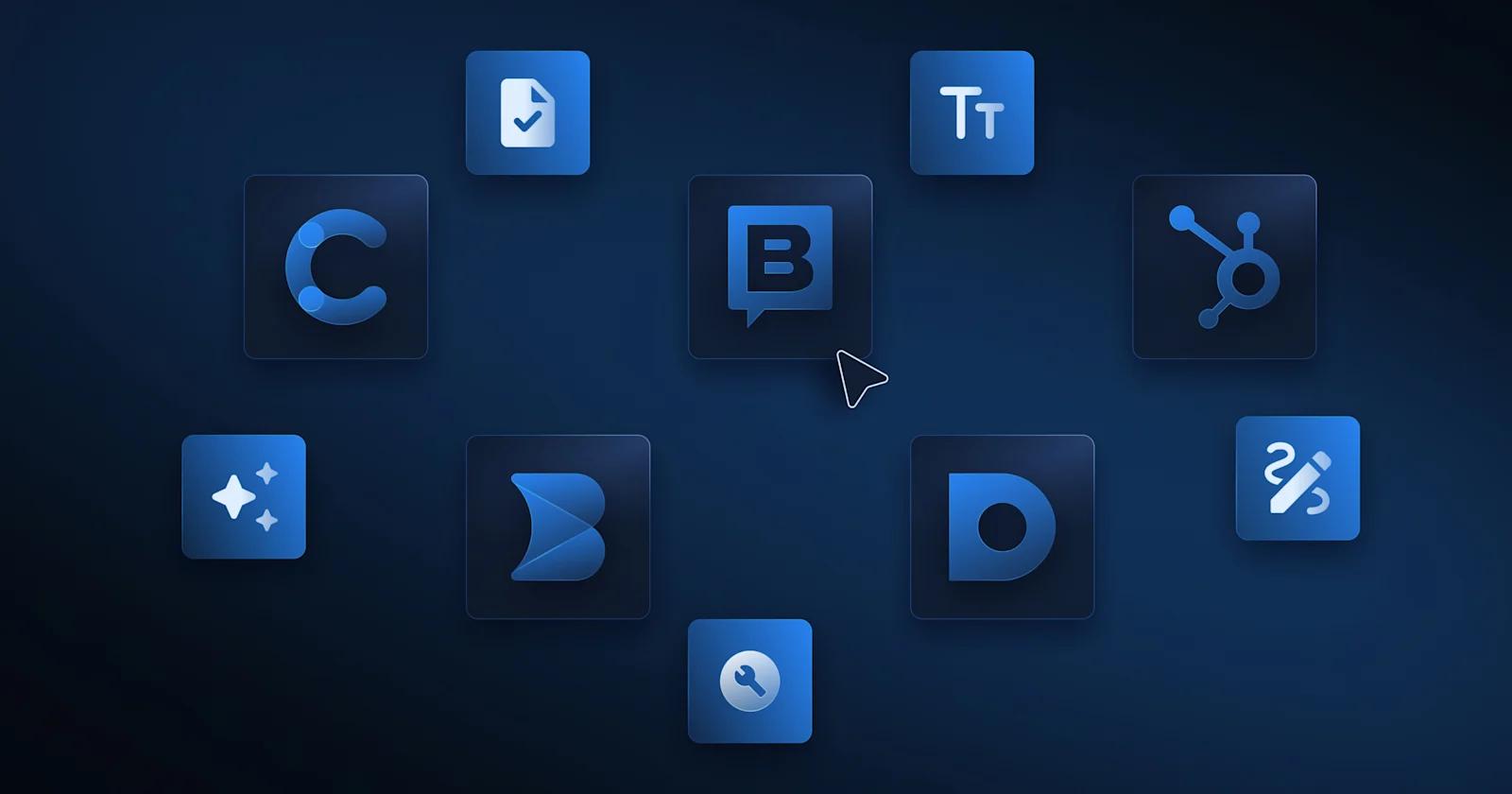For organizations eyeing the next level of growth for their website, choosing a new content management system is more than a technological decision: it's a strategic one. The backbone of your content, a CMS must empower your marketing team and deliver the omnichannel experiences your customers have come to expect. For large, dynamic brands, it is a critical investment required to preserve your reputation and present consistent messaging across all platforms.
With so many architectures and options, it can be overwhelming to identify the best CMS for your enterprise. Ultimately, it’s important to understand that no CMS is one size fits all. What works best for some may not be best for you, as there are several factors that need to be accounted for.
As a web design and development agency for high-growth enterprises like Hubspot, Freshworks, and Snowflake, our team has come to understand the importance of choosing a CMS that fits the unique needs of your organization. Here, we’ll give our thoughts on the top enterprise-level CMS platforms available in 2025, as well as the key features and use cases for each.
Whether you're considering upgrading from a traditional CMS or migrating to an alternative enterprise cms solution, this will offer valuable insights and expert advice for reaching the right decision.
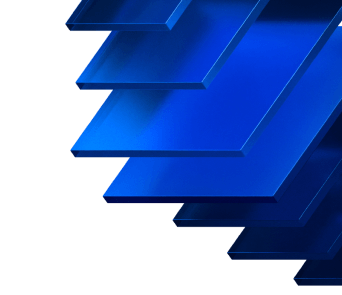
What is an Enterprise CMS?
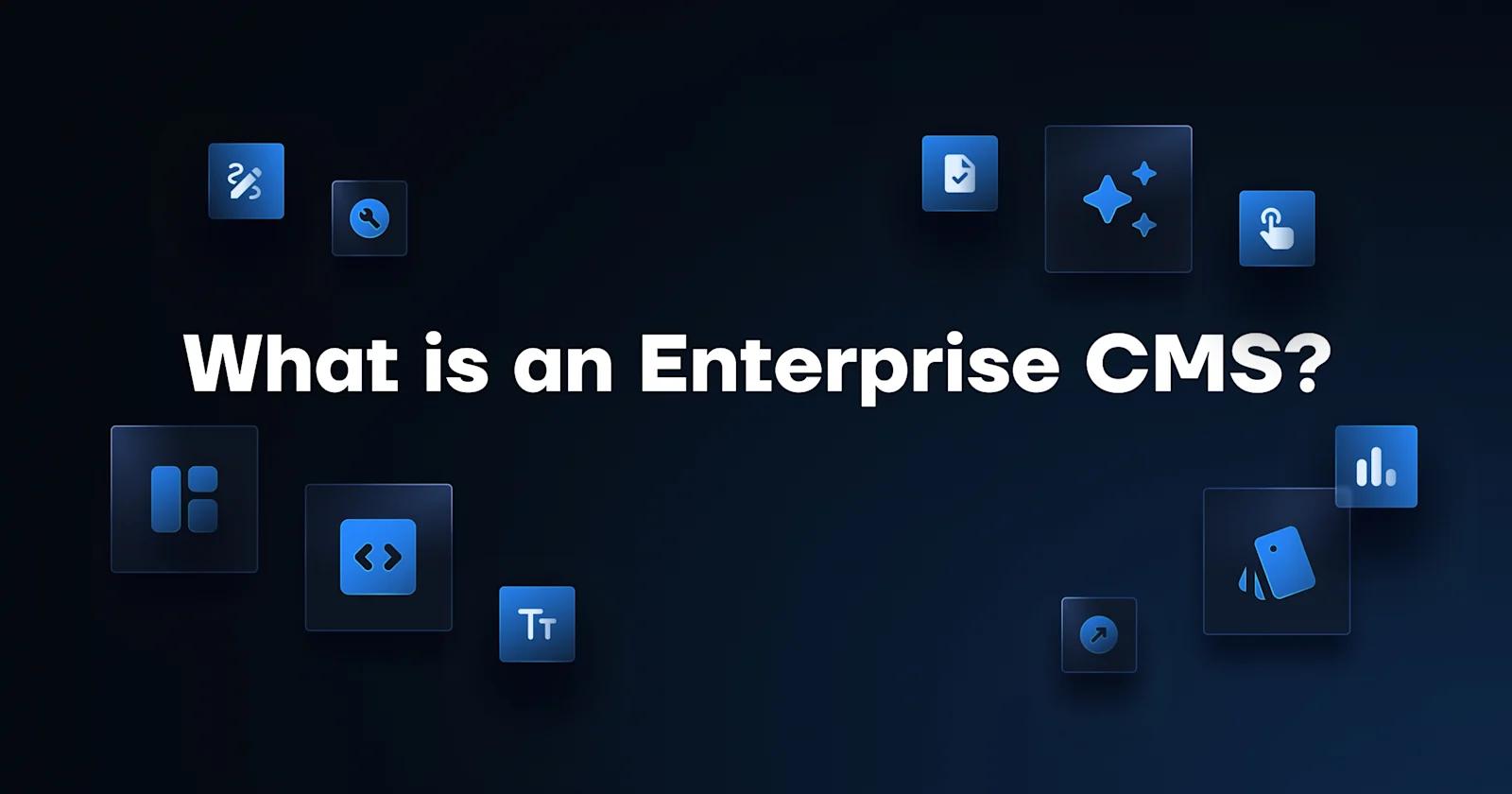
What is an Enterprise CMS
An enterprise CMS is a sophisticated platform engineered to cater to the multifaceted needs of large organizations. In contrast to traditional CMS solutions aimed at smaller websites, an enterprise CMS is crafted to manage the demands of significant scale, ensuring top-notch security, accommodating diversity, and delivering comprehensive functionality.
These platforms are equipped with robust features that facilitate extensive content management tasks, ranging from creation and modification to orchestration and multi-channel publication.
Key aspects of enterprise CMS solutions:
- Scalability: Ability to grow seamlessly with the business, handling increased traffic and content production without compromising performance.
- Security: Advanced protections to safeguard sensitive data against threats and breaches.
- Multi-channel Content Delivery: Consistent content presentation across various platforms and devices.
- Multi-language Support: Ability to cater to a global audience.
- Integration Capabilities: Seamless connection with other business systems like CRM and ERP for a unified operational workflow.
- API-first Architecture: Facilitating flexible integrations and frontend frameworks, particularly relevant for hybrid and headless CMS.
- Compliance and Regulatory Features: Content management practices adhere to legal standards and regulations globally.
- Content Workflow and Collaboration Tools: Streamlining of content creation, approval, and publication processes with tools designed for team collaboration.
- User and Role Management: Providing granular control over who can access and manage different aspects of the CMS.
These features underscore the capability of enterprise CMS platforms to support large organizations in their mission to deliver engaging, secure, and efficient digital experiences at scale.
Evaluation Criteria
In selecting the optimal enterprise CMS, our agency employs a rigorous set of evaluation criteria designed to gauge each platform's efficacy and alignment with the sophisticated needs of large organizations. This approach ensures we not only assess the technical capabilities but also consider the broader impact on operational efficiency, user engagement, and long-term scalability.
We prioritize a balance between innovation and practicality, focusing on how a CMS can drive growth, foster seamless workflows, and secure digital assets. Our evaluation process is rooted in a deep understanding of the digital ecosystem, aiming to equip our clients with a CMS that is both powerful and poised to adapt to the ever-evolving digital landscape.
The evaluation criteria include:
- 🧑💻️ Developer Experience
- ⌨️ Content Editor Experience
- 💡 Content Management Features
- 📈 Scalability
- ⚖️ Customization & Flexibility
- 🔌 Integrations & Ecosystem
- 🏷 Pricing (Value)
- 📞 Customer Support & Community
- 🌐 Multichannel and Omnichannel Support
- 🔒 Security & Reliability
Top Enterprise CMS Platforms
#1. Contentful
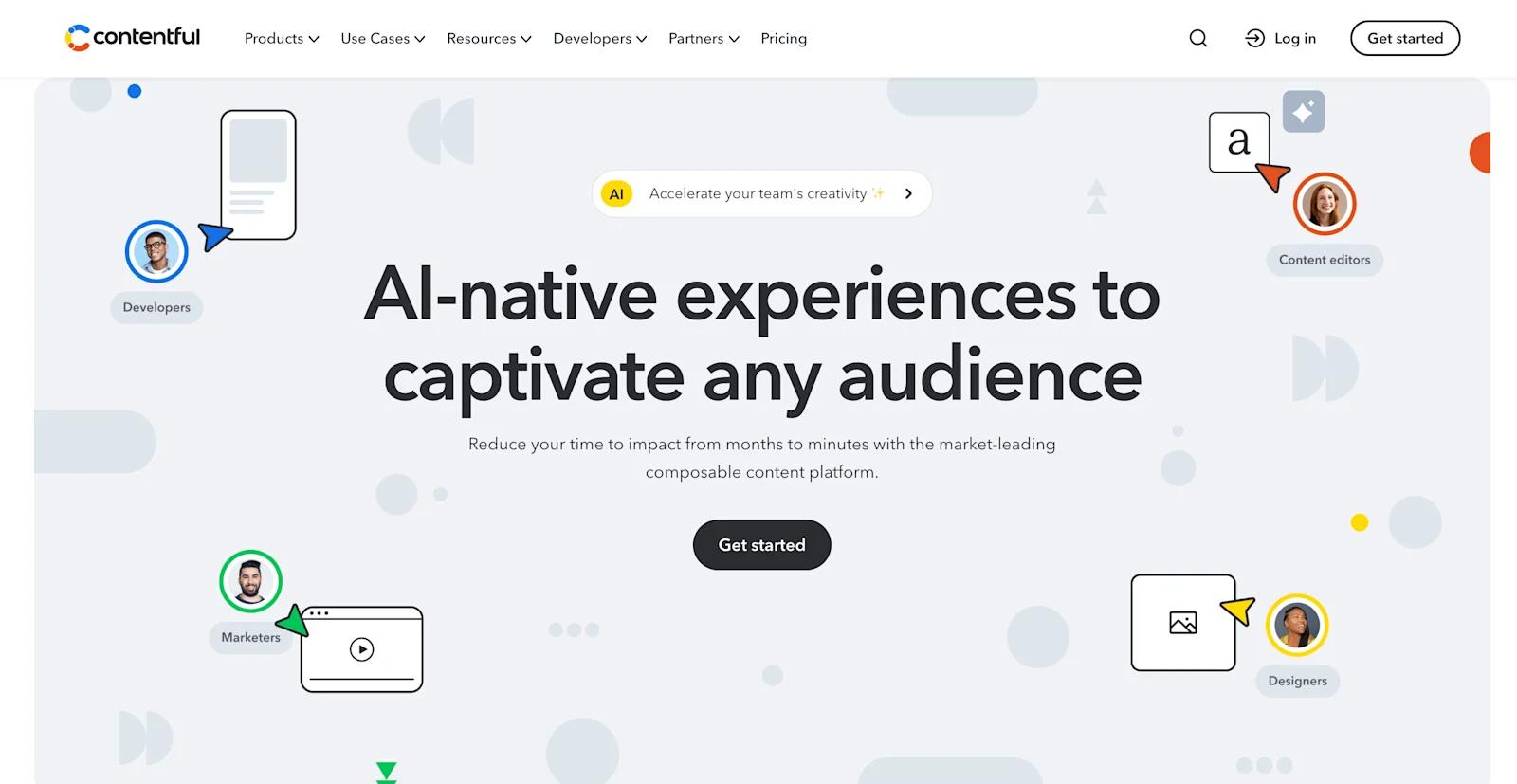
contentful website
- Architecture: Headless
- Key Features: API-first content management, Scalable content infrastructure, Rich text editing
- Use Cases: Commerce, Marketing websites, Mobile apps, Support portals
Contentful stands out as a pioneer in the enterprise headless CMS space, offering enterprises the flexibility to manage and deliver content across multiple channels and multiple websites without being tied to a single frontend framework. Its API-first approach enables developers to build custom digital experiences rapidly, while content creators appreciate the intuitive interface that streamlines content production. Contentful's emphasis on a decoupled architecture allows for greater scalability and faster deployments, making it a top choice for large-scale organizations aiming for a future-proof digital strategy.
Our take on Contentful
For enterprises, Contentful is essentially the gold standard when it comes to content management. They’ve built a tremendous amount of brand equity in creating an intuitive, reliable, and feature-rich platform that powers websites for some of the world’s largest companies. If you were to ask Webstacks’ developers what their favorite CMS is, most would say Contentful. Our content editors also think highly of the platform thanks to its straightforward page-building and preview functionalities. Lastly, their content blocks make implementing and customizing enterprise designs a breeze.
If you want to learn more about this CMS you can check out our complete Contentful overview.

#2. Sanity
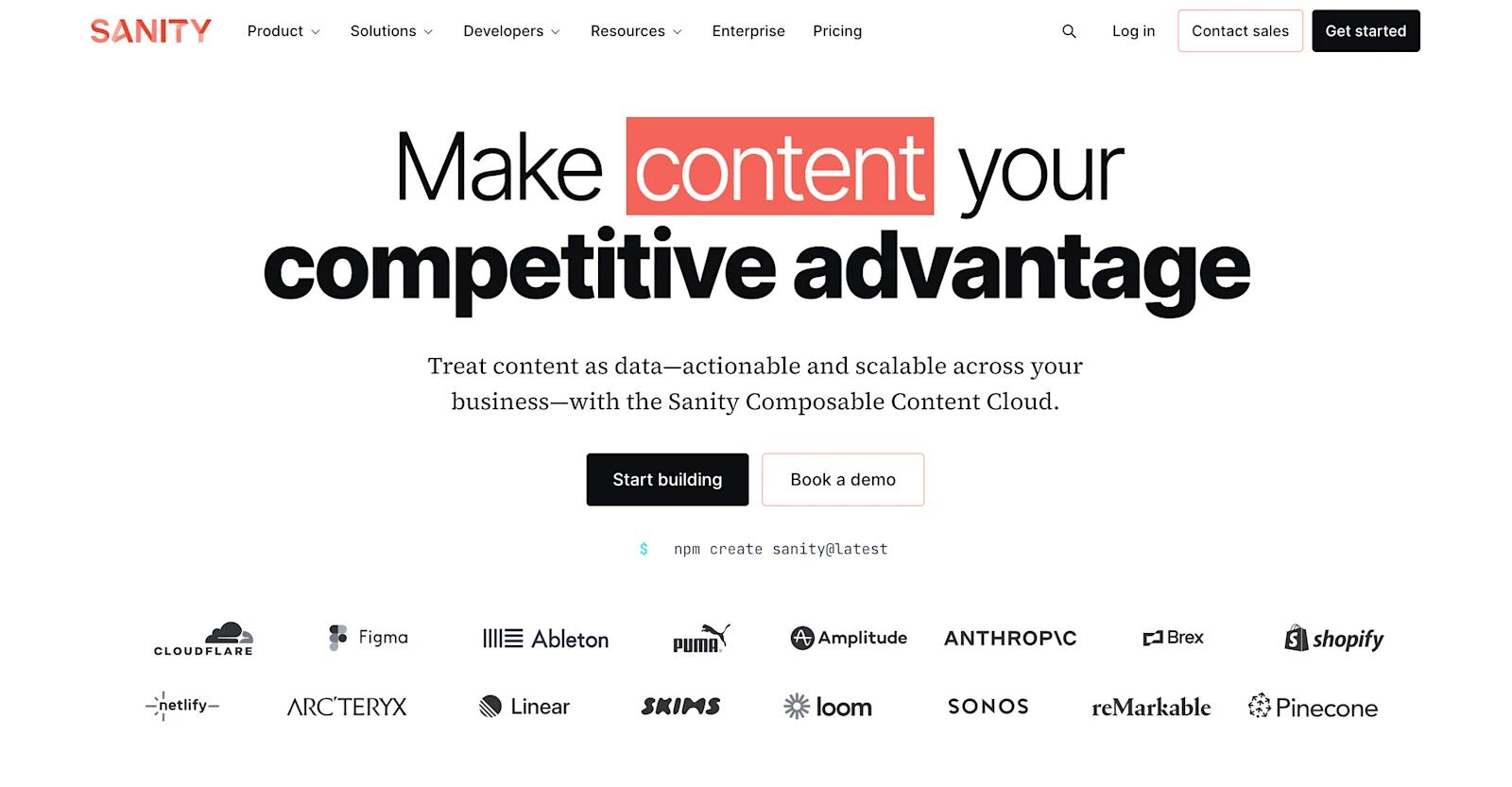
sanity website
- Architecture: Headless
- Key Features: Real-time collaboration, Portable text editor, Customizable content schemas
- Use Cases: Ecommerce, Mobile apps, Products & services, Marketing sites
Sanity offers a highly customizable, real-time headless CMS that places a strong emphasis on structured content. Its unique selling point is the portable text editor, which allows for the creation of rich text content that can be reused across platforms.
Sanity's open-source base layer, coupled with powerful APIs, gives developers extensive control over content structures and workflows. This platform is especially suited for teams looking to build and scale digital experiences with a high degree of customization. Its localization and personalization integrations are excellent for global teams.
Our take on Sanity
Sanity is worth researching when looking to build enterprise-grade, dynamic digital experiences. The flexibility and customization it offers make it a notable pick among our developers who enjoy the creative freedom it provides. Sanity's real-time collaboration is also great for content teams, enabling more streamlined workflows.
For businesses that value a tailor-made CMS that can adapt to complex content structures, Sanity is a formidable choice. To be transparent, we find Sanity’s UI to be fairly comparable to Contentful in terms of features and functionality. However, we still give Contentful the upper hand in most use cases.

# 3 Strapi
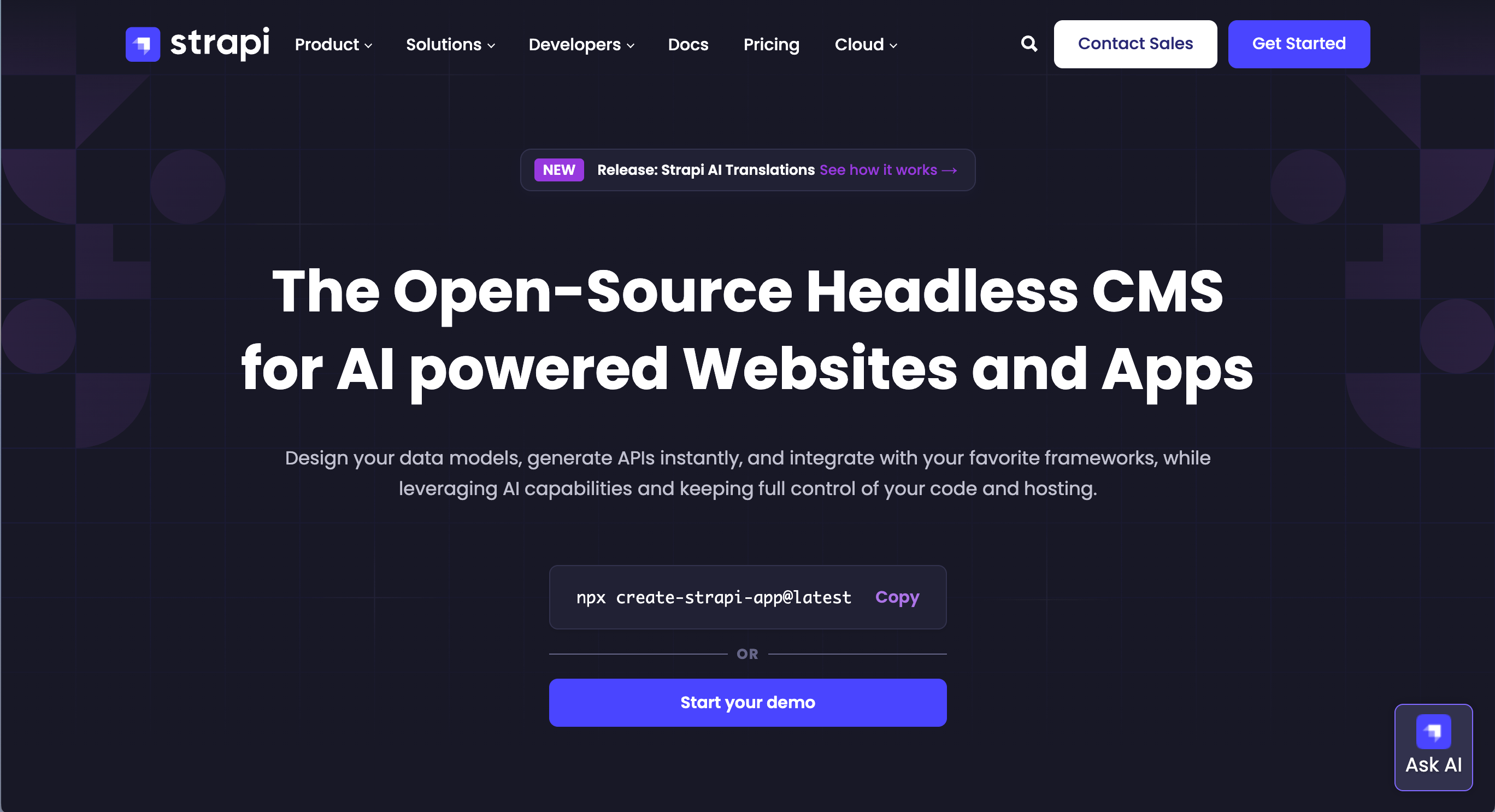
- Architecture: Headless CMS (Open-source)
- Key Features: Self-hosted or cloud deployment, Customizable admin panel, RESTful and GraphQL APIs
- Use Cases: Developer-centric projects, Custom applications, Marketing websites, Product catalogs
Strapi stands out as the best leading open-source headless CMS that gives developers complete control over their content infrastructure. Built on Node.js, it offers flexibility to self-host or deploy on Strapi Cloud, making it attractive for organizations prioritizing data ownership and customization.
Strapi’s intuitive admin panel allows for rapid content type creation, while dual API support (REST and GraphQL) provides development freedom. Strapi's plugin ecosystem and extensive customization capabilities make it particularly suited for teams with specific technical requirements.
Our take on Strapi
Strapi is a favorite among our developers who value control and flexibility in their tech stack. The open-source nature eliminates vendor lock-in concerns, and self-hosting gives enterprises complete data ownership and infrastructure control.
We've been impressed by how user-friendly the admin panel is for content editors, striking an excellent balance between developer power and editor simplicity. The robust plugin ecosystem and active community support are outstanding resources.
While self-hosted deployments do require some technical setup, teams with solid development resources will find this straightforward—and Strapi Cloud is always available for those preferring a managed approach.
For organizations seeking deep customization and complete platform control, Strapi delivers exceptional value. It's an excellent choice for enterprises that want the flexibility of open-source combined with modern headless CMS capabilities.
#4. Storyblok
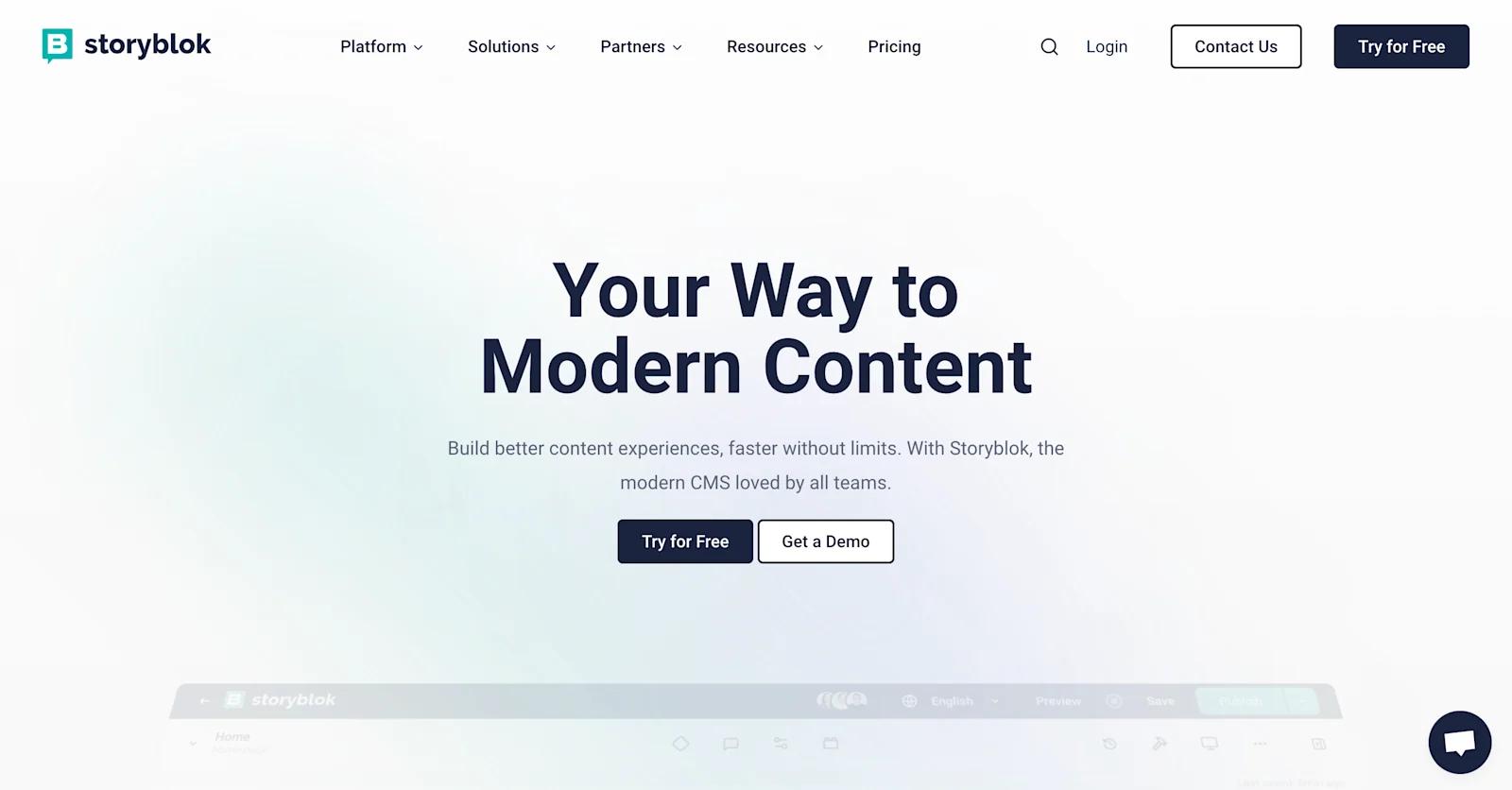
storyblok website
- Architecture: Headless CMS
- Key Features: Visual editor, Nested content blocks, Full RESTful API
- Use Cases: Enterprise websites, Ecommerce, Mobile apps
Storyblok introduces a unique blend of headless architecture with a visual editor, making it a versatile choice for teams seeking flexibility and ease of use. The platform's real-time visual editing capabilities allow content creators to see changes as they happen, ensuring a seamless bridge between content management and delivery. Storyblok's component-based approach enables reusable content blocks, facilitating consistency and efficiency in content creation. It's a robust solution for enterprises looking to empower their content teams without compromising on technical sophistication.
Our take on Storyblok
Storyblok has rapidly become a favorite among our agency for its unique blend of headless flexibility and visual editing. We've found its visual editor to be a game-changer, especially when explaining the concept of headless to client’s team members who are less familiar with the technical side. Ultimately, content teams can work more independently, significantly reducing the back-and-forth between devs and marketers. Storyblok's content blocks are also highly advantageous, and they align perfectly with our agency’s approach to modular web design. Enterprises looking for a user-friendly, innovative CMS - Storyblok is certainly an option worth exploring.

#5. DatoCMS
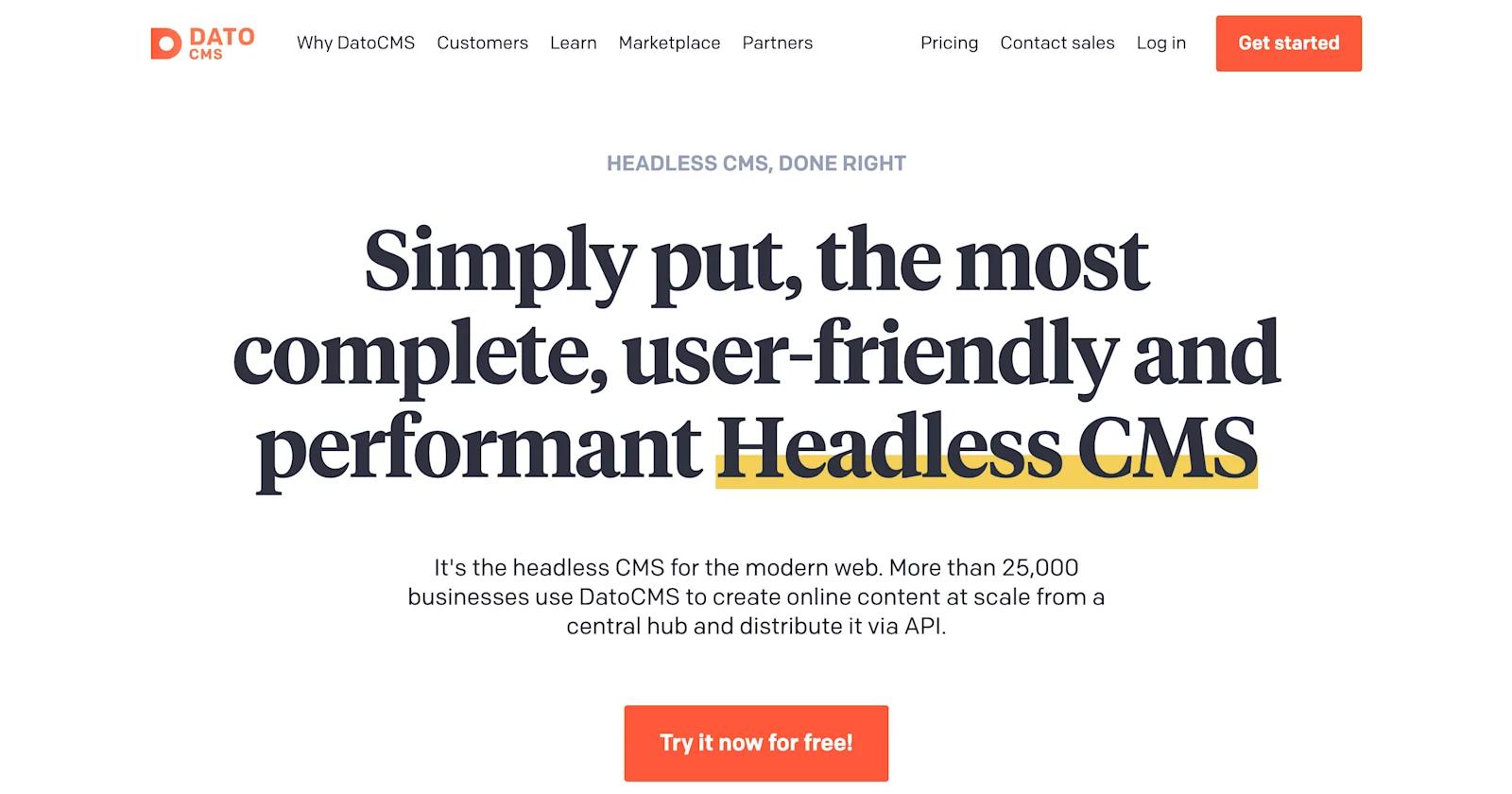
datocms website
- Architecture: Headless CMS
- Key Features: Worldwide CDN, Modular content blocks, SEO management tools
- Use Cases: Enterprises, Institutions, Ecommerce
DatoCMS is lauded for its focus on delivering a streamlined content management experience without sacrificing the power and flexibility of a headless CMS. It offers a slick interface and a strong set of tools for content creators, including modular content blocks and real-time collaboration features. DatoCMS is particularly noted for its excellent image and video management capabilities, making it a great option for content-heavy websites. Its GraphQL API is ideal for enterprise web development, enabling the flexibility to query data as needed and enhancing front-end possibilities.
Our take on DatoCMS
DatoCMS impresses us with its sleek user interface and powerful content management capabilities, especially for image and video. It's an enterprise headless CMS we often recommend to clients who need a robust, yet straightforward platform for multimedia-heavy projects. Our developers appreciate the flexibility of its GraphQL API, which complements our agile development processes well. It’s also a solid choice for its customizable technical SEO features.
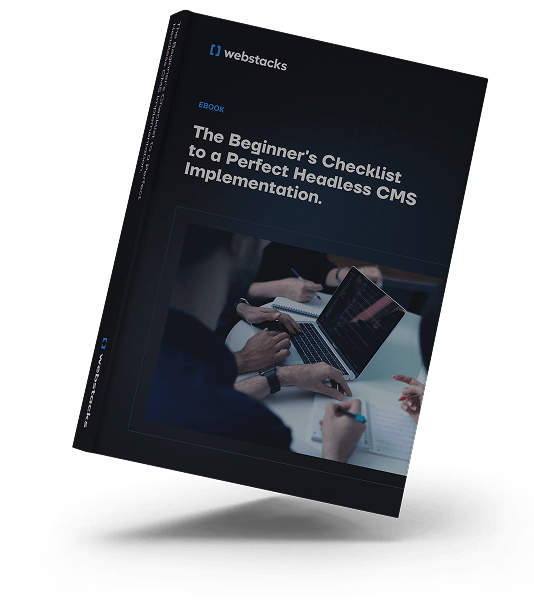
#6. Hygraph
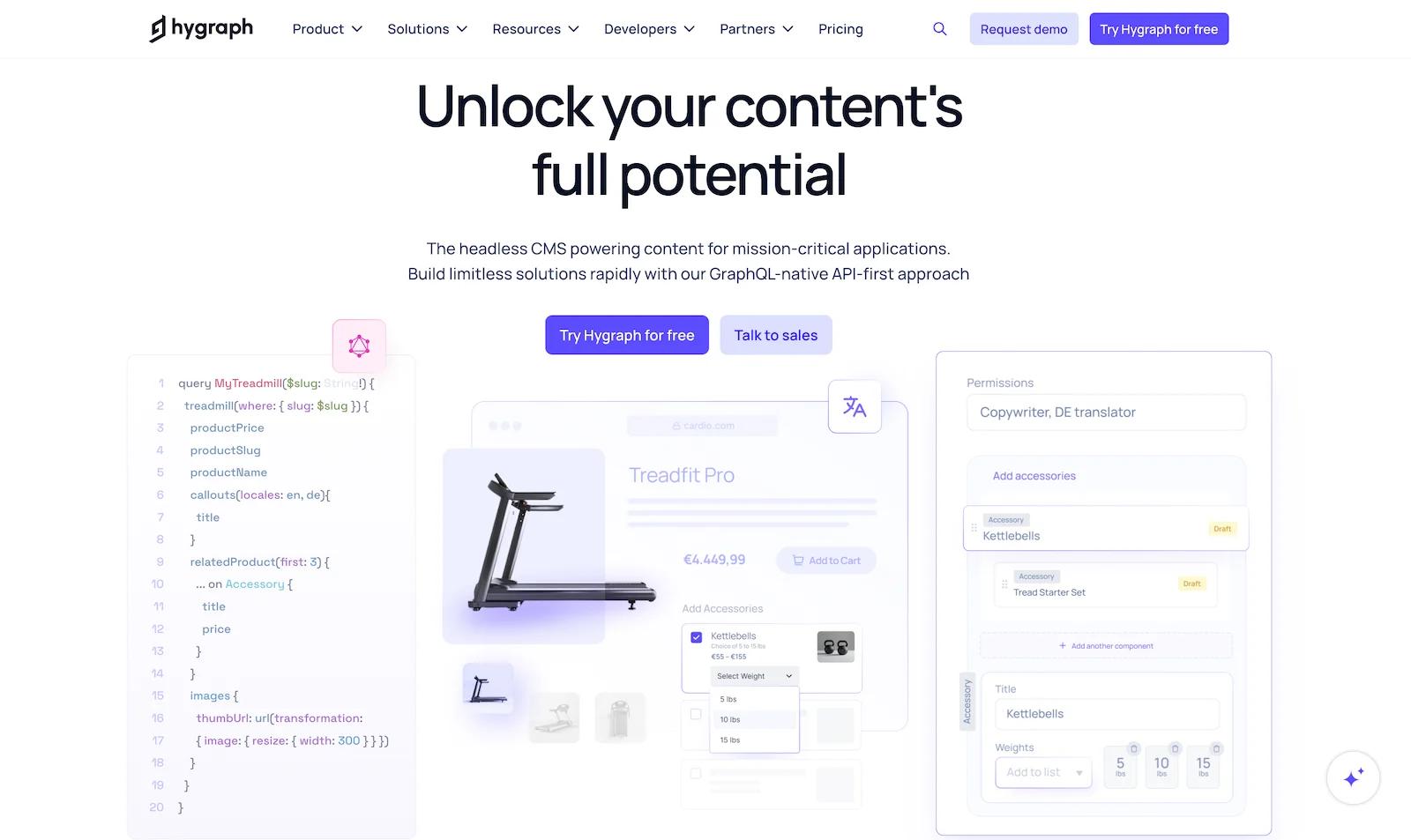
hygraph website
- Architecture: Headless CMS
- Key Features: GraphQL-native, Content Federation, API-first
- Use Cases: Enterprises, e-commerce, B2B SaaS, B2C media, multi-platform content distribution
Hygraph stands out as a fully GraphQL-native CMS designed for content federation, giving enterprises the ability to pull data from multiple sources into one central hub. This API-first platform offers immense flexibility, allowing developers to manage, distribute, and query content across various platforms effortlessly. Its content federation features make it ideal for enterprises needing to unify data from disparate systems, while maintaining control over how content is structured and displayed.
Our take on Hygraph
Hygraph’s strength lies in its GraphQL-first architecture, offering incredible flexibility for developers working with complex data structures. We’ve found it particularly useful for clients who need to integrate multiple data sources into their content workflows. Its content federation capabilities streamline content management across diverse platforms, making it a go-to solution for enterprises with intricate, multi-platform needs.
#7. Prismic
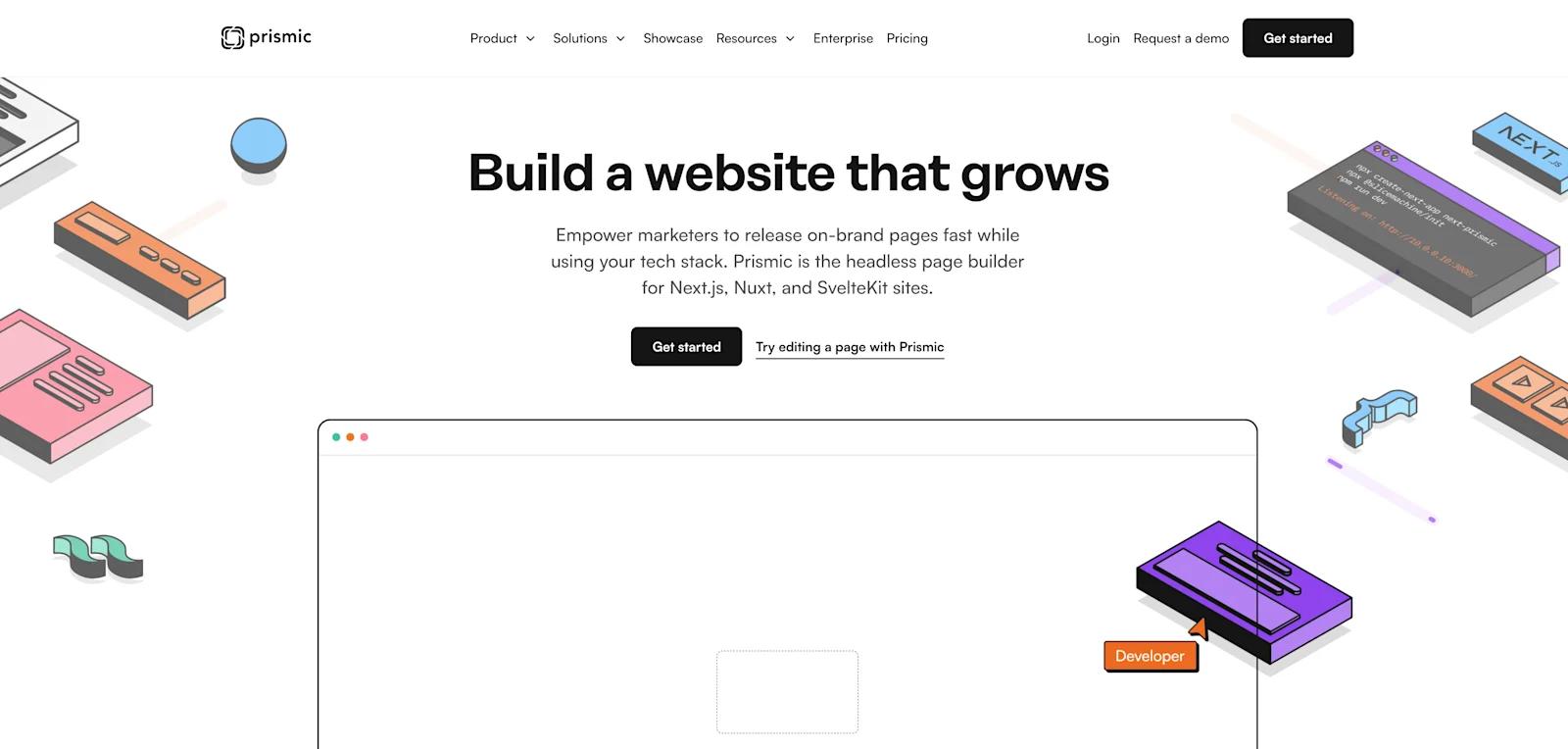
prismic website
- Architecture: Headless CMS
- Key Features: Custom Type Builder, Slice Machine, Multi-language support
- Use Cases: Enterprises, marketing websites, multi-site CMS, blogs
Prismic is a popular headless CMS known for its user-friendly content editor and its flexible, component-based system called Slice Machine. This allows developers and content creators to easily build dynamic, reusable sections of content without compromising design or functionality.
Prismic’s robust multi-language support and seamless integration with frontend frameworks like Next.js and Nuxt.js make it a strong choice for companies with global audiences. Additionally, its Custom Type Builder allows users to create tailored content structures that fit specific business needs.
Our take on Prismic
Prismic’s visual builder, Slice Machine, is a standout feature for teams needing flexibility in content creation while ensuring consistent design. We’ve worked with clients that love its intuitive interface, making it easy for both developers and marketers to collaborate. The ability to integrate smoothly with modern frameworks adds another layer of efficiency, making it a great fit for dynamic, marketing-driven websites. We also appreciate its multi-language capabilities, which help brands scale their global content efforts.
#8. WordPress VIP
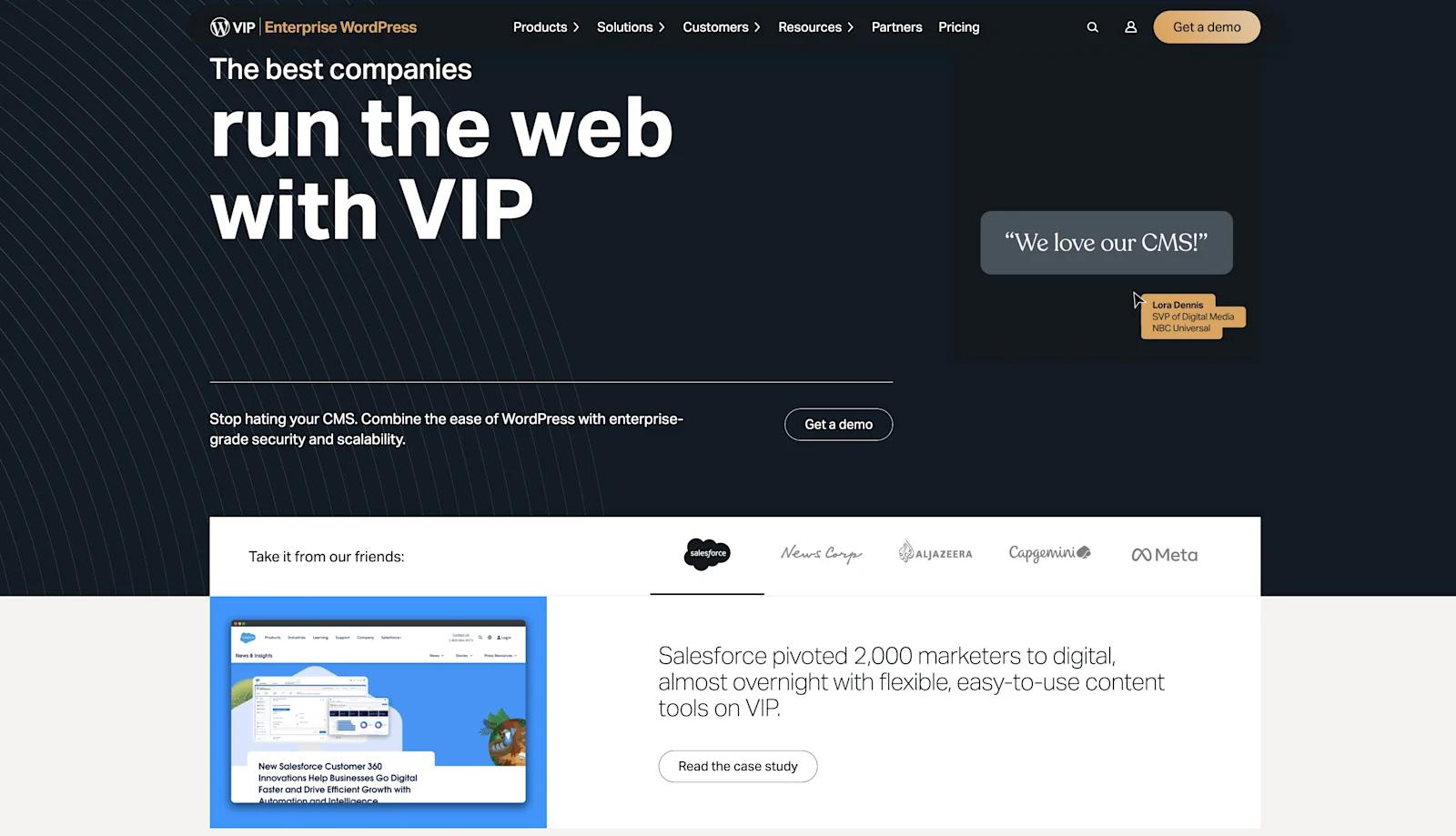
wpvip-homepage
- Architecture: Hybrid CMS
- Key Features: Rapid content-authoring, scalable platform, enterprise-grade security
- Use Cases: Marketing sites, content-heavy experiences and thought leadership, regulated industries, and government
WordPress VIP takes the ease and flexibility of WordPress—the CMS that runs 43% of the web—and brings it to the largest organizations. The platform is built to meet the scalability challenges of the biggest media properties, the security requirements of major government agencies, and the implementation needs of the most sophisticated enterprise companies. WordPress VIP turbocharges content velocity and provides a foundation of data to understand and improve experiences.
Our take on WordPress VIP
WordPress VIP combines the ease of WordPress with the security and scalability needed to manage enterprise-grade content. It proves that a headless CMS is not the only way to achieve a future-proof, composable website. With their new API Mesh and platform enhancements, businesses can create differentiated experiences faster and at lower costs. And all of it is backed by expertise found nowhere else, so you can build with confidence.
#9: Hubspot CMS
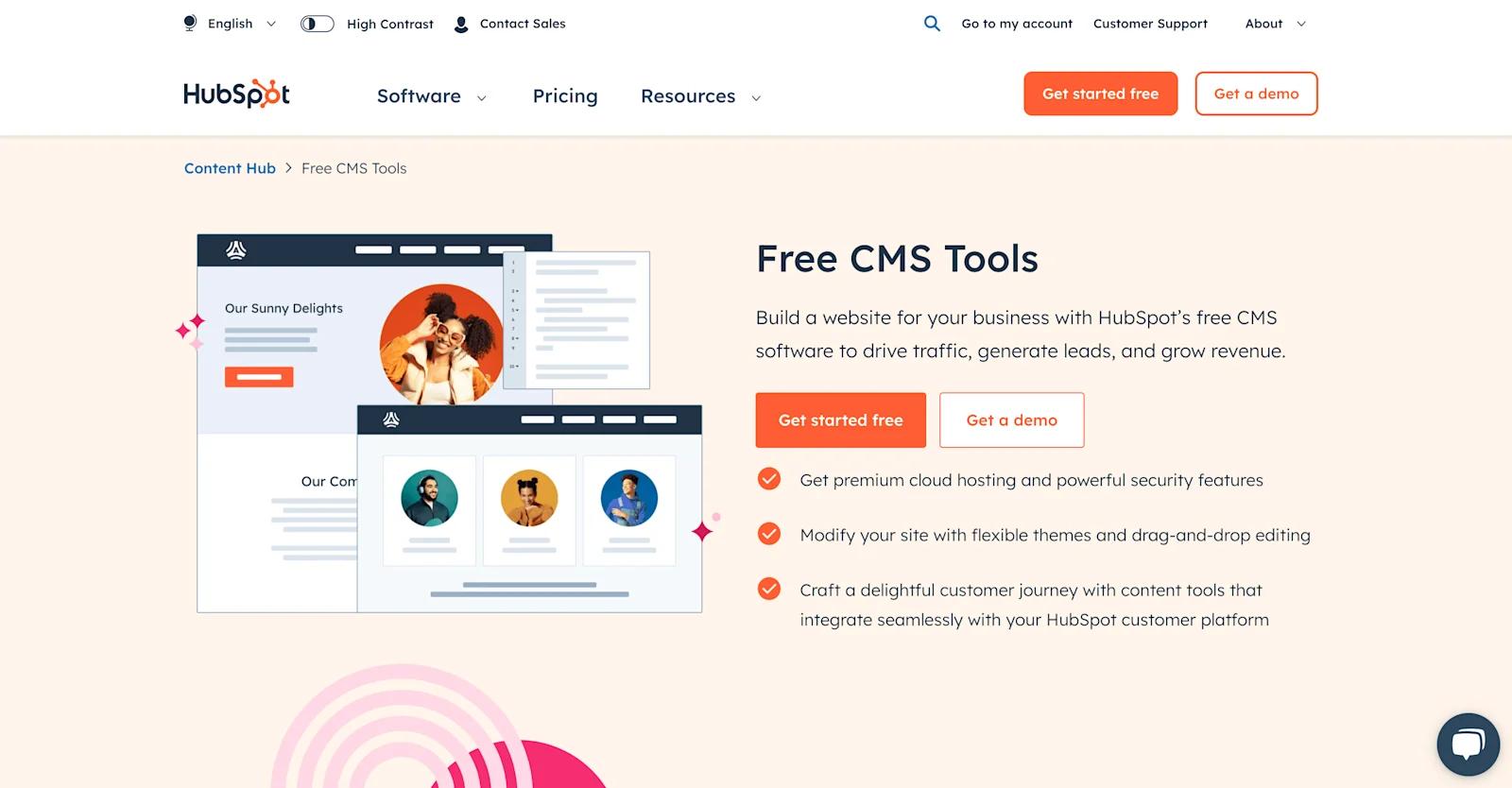
hubspot cms
- Architecture: Hybrid CMS
- Key Features: Integrated marketing tools, SEO recommendations, Drag-and-drop builder
- Use Cases: Marketing-focused websites, Lead generation sites, Blogging and content creation platforms
HubSpot CMS integrates content management with HubSpot's broader suite of marketing, sales, and service tools, offering a holistic approach to customer experience management. It stands out for its user-friendly design and deep integration with CRM tools, enabling personalized content delivery and lead management. HubSpot CMS is ideal for marketing-focused organizations looking for an all-in-one platform that not only manages content but also drives engagement and conversions.
Our take on Hubspot
For enterprises already familiar with Hubspot, HubSpot CMS could be a well-suited option for you. We've been particularly pleased with its user-friendly interface and CRM integration, which enables you to effortlessly deliver personalized content journeys.
It's our go-to recommendation for clients who are already invested in the HubSpot ecosystem and do not need multi-channel content delivery. However, you must also take into account that this is not a headless CMS. Enterprises with complex digital experiences and tons of content may want to look into different platforms.
#10: Adobe Experience Manager (AEM)
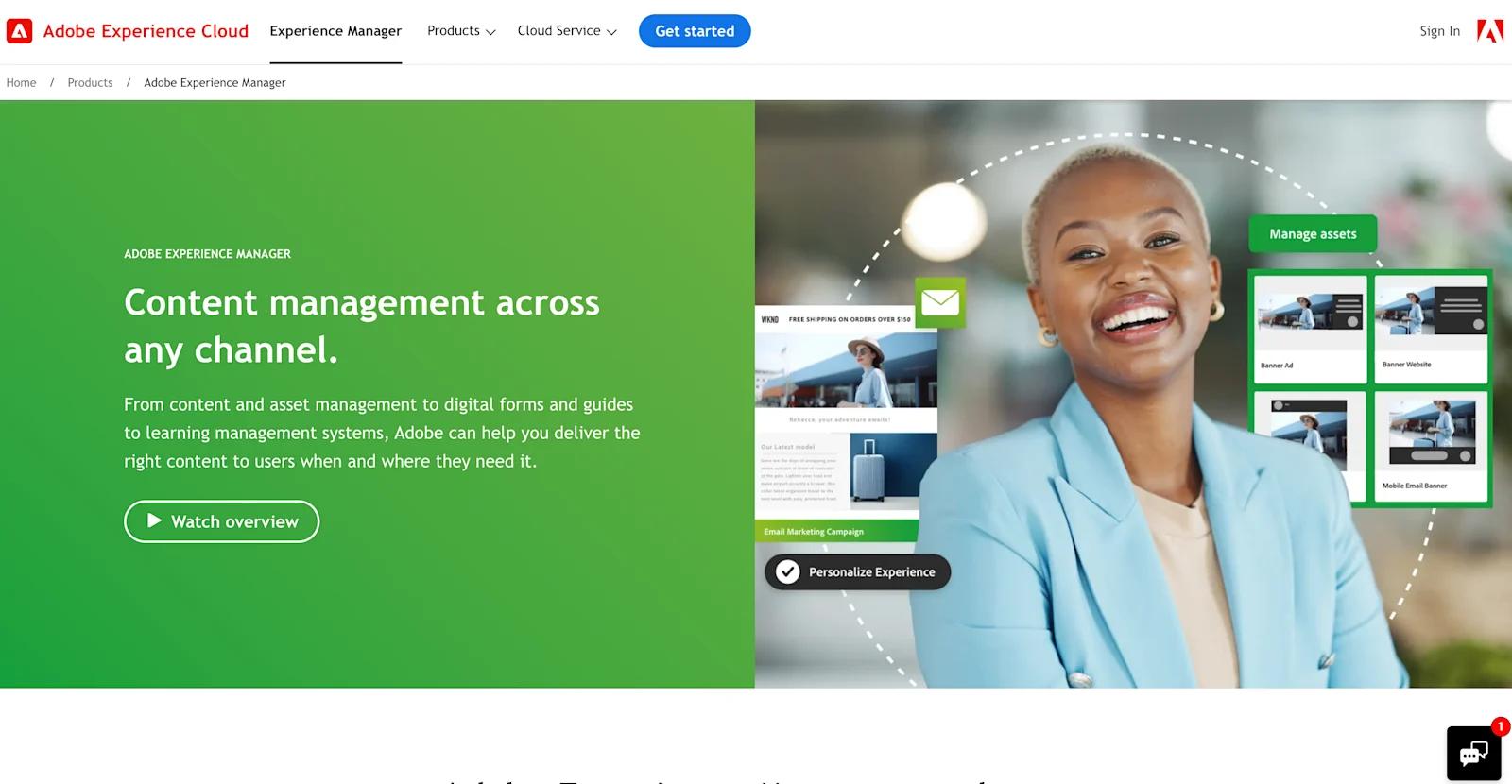
aem-website
- Architecture: Enterprise-grade Hybrid CMS
- Key Features: Digital asset management, Personalization capabilities, Content intelligence
- Use Cases: Large-scale enterprise websites, Digital marketing platforms, Complex content-driven applications
Adobe Experience Manager is a comprehensive enterprise CMS solution that combines digital asset management with powerful content management capabilities. AEM is designed for large enterprises that require extensive scalability, security, and integration capabilities. It stands out for its ability to deliver personalized digital experiences at scale, leveraging Adobe's AI and machine learning technologies. AEM's robust workflow tools and extensive ecosystem make it an ideal choice for organizations looking to streamline their digital experience delivery.
Our take on AEM
AEM offers a solid suite of features for website content and digital asset management. It integrates well within the broader Adobe ecosystem, which can be a significant benefit for organizations already leveraging Adobe products. We believe AEM does have a unique learning curve, meaning it requires a committed investment to fully utilize its potential.
It's also worth noting that because AEM is not a true headless CMS, it lacks some of the frontend flexibility and ease of multi-channel content delivery that other headless CMS platforms provide. While it may not be the best fit for every project, its reliability and features make it a strong contender for some enterprises.
#11: Builder
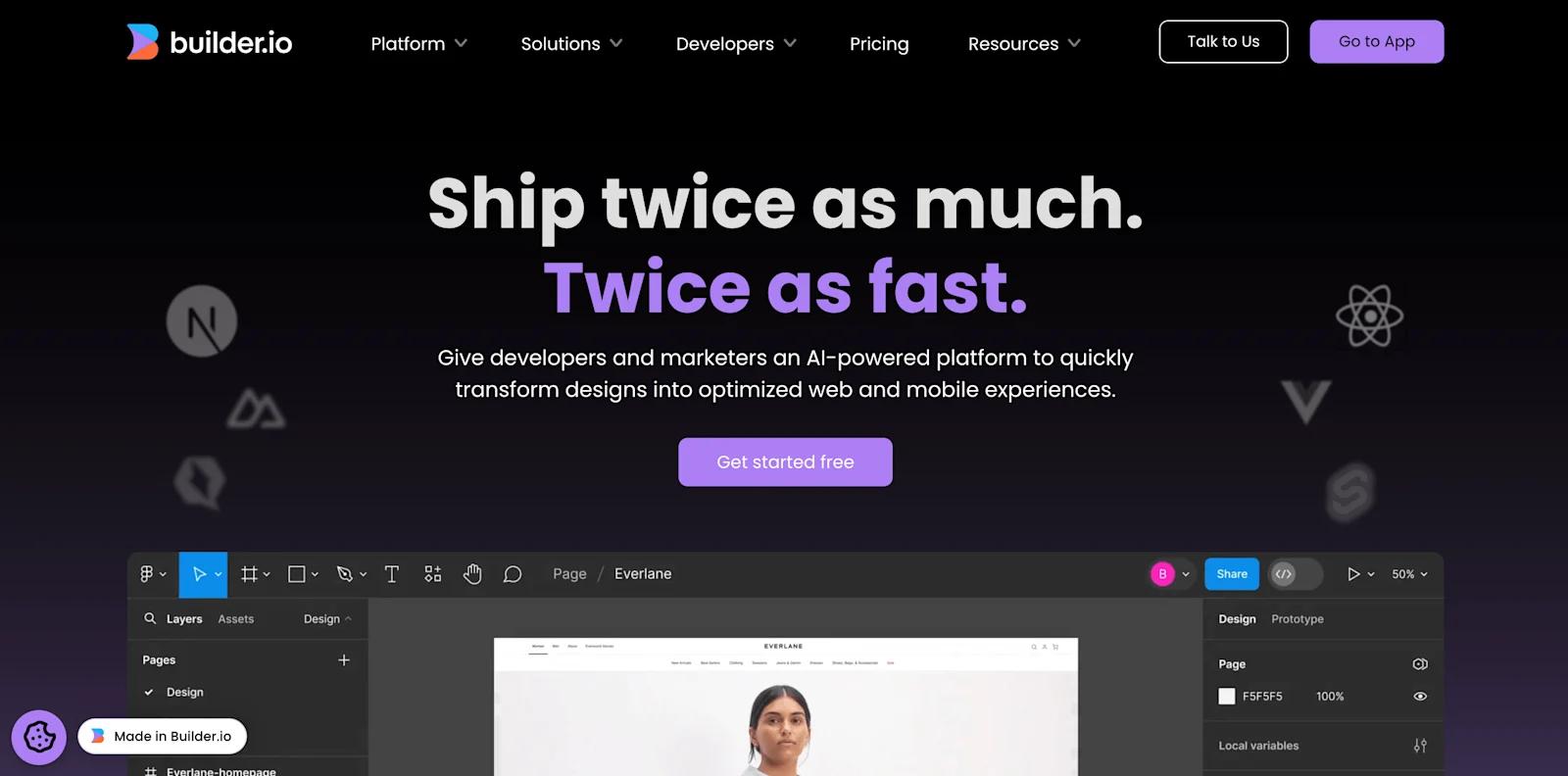
builder website
- Architecture: Visual Headless CMS
- Key Features: Drag-and-drop editor, Custom components and templates, Real-time visual preview
- Use Cases: Ecommerce, Marketing websites, Multi-brands
Builder.io is designed with the vision of making visual content creation accessible to everyone, not just developers. It bridges the gap between marketers and developers by providing a drag-and-drop interface that integrates seamlessly with various e-commerce platforms and web frameworks. Its standout feature is the ability to create highly customized and interactive digital experiences without writing code, enhancing speed to market for new campaigns and updates. Builder.io is particularly beneficial for businesses looking to maintain agility in their marketing strategies.
Our take on Builder
If you are eager to scale your website at lightning speed, look no further than Builder. Many of Webstacks’ enterprise website migration projects that involve moving off WordPress end up using Builder as their new and improved CMS.
Taking a modern approach to content management strategy, Builder was purposely built for visual editing, while most other headless options have retroactively added the functionality. Furthermore, dragging and dropping components to build pages instantaneously is a content editor’s dream. In our opinion, the UI of a CMS doesn’t get much better than this. We highly recommend Builder, especially for B2B/SaaS marketing sites.
#12: Contentstack
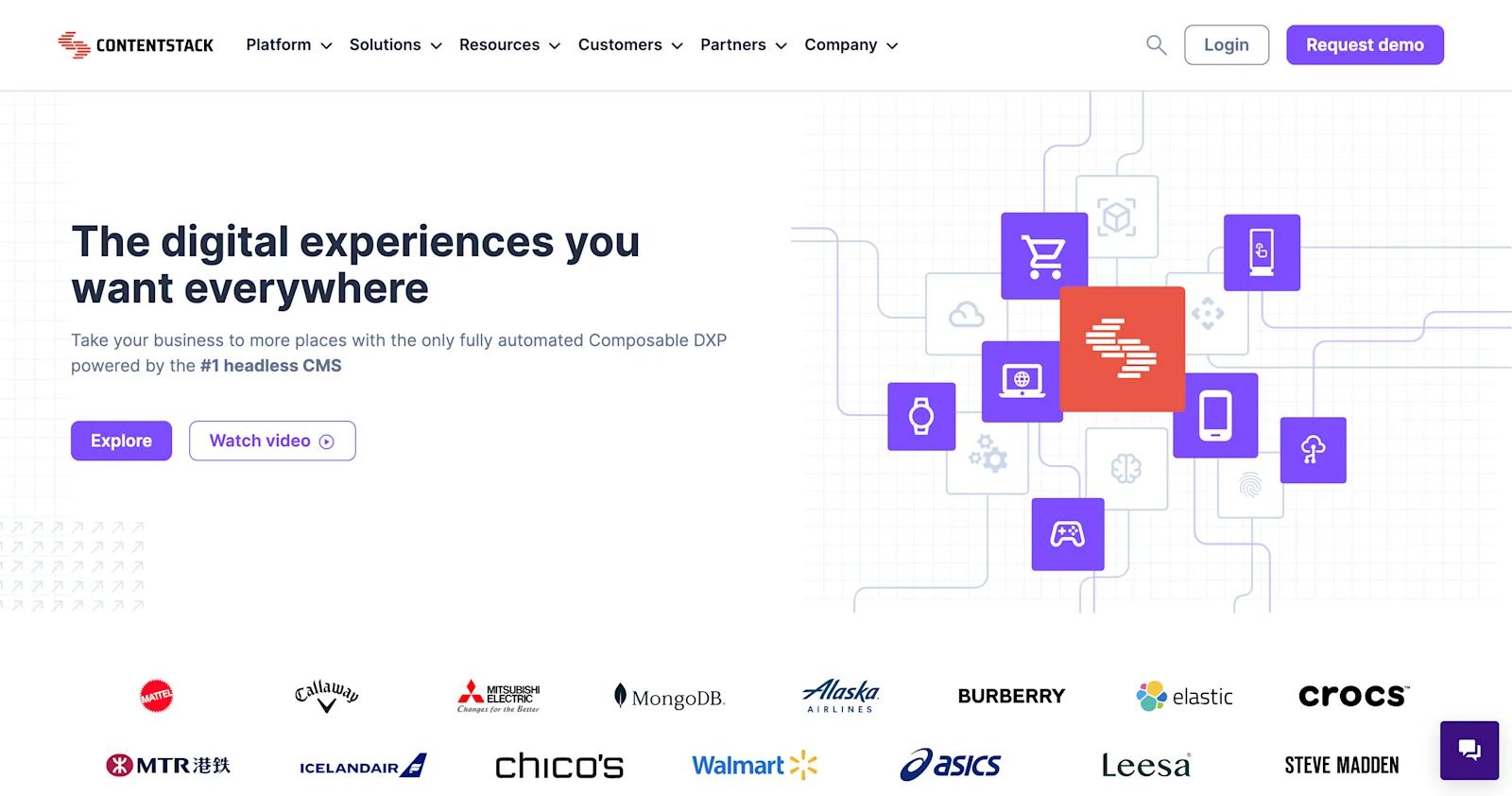
contentstack website
- Architecture: Headless
- Key Features: Microservices architecture, Content synchronization, Workflow automation
- Use Cases: ECommerce, Digital experience platforms, Multi-channel content management
Contentstack is a newer entrant to the enterprise level CMS market, focusing on providing a seamless content management experience with a strong emphasis on speed. While detailed information about Cornerstack's unique features and benefits might be less known, its commitment to a user-friendly interface and efficient content delivery mechanisms positions it as a promising solution for businesses prioritizing enterprise web performance and ease of use.
Our take on Contentstack
Contentstack is fairly agile and scalable, making it a favorite among developers for its API-first approach and flexibility with tech stacks. It enables rapid deployment of content, which aligns well with the dynamic needs of modern enterprises. While Contentstack is feature-rich, we think it can sometimes feel overwhelming for smaller teams or projects that don't require its full suite of capabilities. Ultimately, the content editor experience may not be as intuitive and robust as alternative headless CMS options.
#13: Magnolia
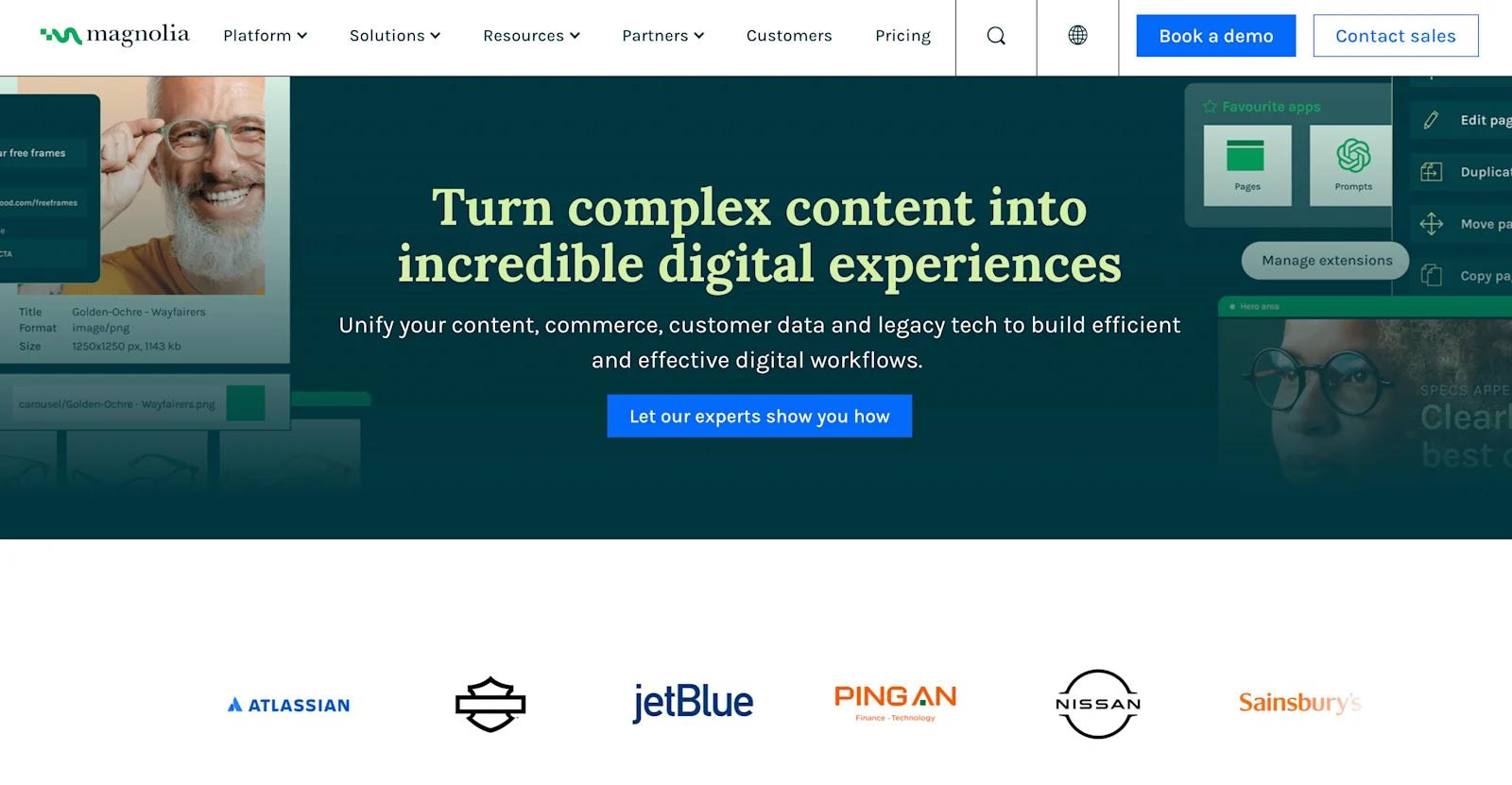
magnolia cms website
- Architecture: Hybrid CMS
- Key Features: Content personalization, Multi-site management, Integration frameworks
- Use Cases: Financial services websites, Global corporate intranets, Digital experience platforms
Magnolia CMS combines the power of an enterprise-grade platform with the simplicity of use, aimed at both marketers and developers. It offers a unique 'light development' approach, allowing for rapid development and deployment of digital experiences without deep technical know-how. Magnolia's strong focus on integration capabilities enables it to act as a central hub, connecting various digital marketing tools and data sources to create cohesive customer experiences. Its robust content management and personalization features make Magnolia a compelling choice for businesses seeking to deliver tailored digital experiences at scale.
Our take on Magnolia
Magnolia impresses us with its strong emphasis on integrations, making it a flexible platform for enterprises aiming to connect a wide array of digital marketing tools and data sources. While Magnolia is powerful, its interface and user experience are less intuitive compared to other CMS platforms. Additionally, while it offers extensive customization capabilities, this can lead to complexity in configuration and management, requiring a higher level of technical involvement than some teams wish to dedicate to their content and CMS.

The Strategic Importance of the Right Enterprise CMS
There you have it - the top 12 enterprise CMS platforms from our agency’s perspective! As we mentioned earlier, picking a CMS can be a daunting task for large-scale organizations with dynamic digital experiences and loads of existing content. Implementing and maintaining is a significant investment that takes time, money, and resources.
Therefore, you should do your due diligence, and collaborate with your team to identify the right tool for the job. We recommend taking some time to explore each CMS website, going through some demos, and discussing with your team (decision makers, developers, and content editors) which option makes the most sense for your team and business objectives.
If your organization is interested in exploring some of the enterprise headless CMS options we feature, check out our checklist that includes everything you must know before starting your migration project. Click the link below! 👇


